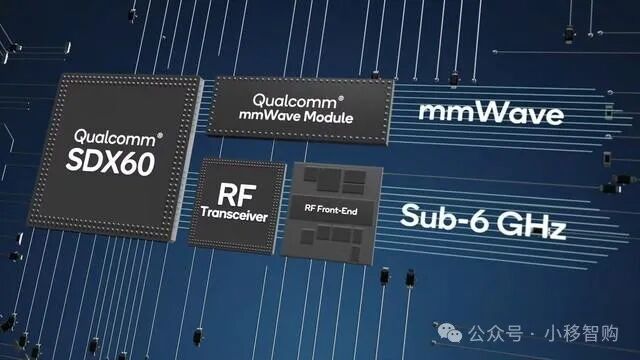Qualcomm and MediaTek: Unveiling the Performance of Flagship ChipsINTERNATIONAL WORKERS’ DAY

Qualcomm and MediaTek have once again entered the “battle of the giants” in the flagship chip arena, with performance advancing by leaps and bounds. However, this progress has led to a somewhat troubling issue — the prices of high-end models are skyrocketing! Today, let’s discuss the intricacies behind this.
01Qualcomm Snapdragon 8 Elite: The Performance Monster Emerges
First, let’s talk about the Qualcomm Snapdragon 8 Elite, which is Qualcomm’s latest “performance monster”. It utilizes TSMC’s second-generation 3nm process technology, which lays a solid foundation for the chip’s performance and energy efficiency, akin to upgrading your computer’s motherboard to allow all hardware to perform better.
1. In terms of architecture, the Snapdragon 8 Elite abandons the Arm public CPU architecture and adopts the self-developed second-generation Oryon architecture CPU core for the first time, featuring 2 “super cores” with a clock speed of up to 4.32GHz and 6 “performance cores” with a clock speed of 3.52GHz. This “2+6” all-large-core design allows it to excel in computational power and multitasking capabilities. The single-core score reaches 3230 points, while the multi-core score is 10132 points, with AnTuTu scores exceeding 2.85 million. For resource-intensive games like “Genshin Impact”, the frame rate remains stable as if driving on a highway at a constant speed, and heat control is excellent, ensuring the phone doesn’t overheat even after prolonged gaming sessions.
2. In terms of GPU, it is equipped with the new Adreno 830 GPU, based on a new tile architecture, featuring three tiles, each running at a clock speed of 1.10GHz and equipped with 12MB of dedicated cache. This results in a 40% improvement in gaming performance and a 40% increase in energy efficiency, with ray tracing performance enhanced by 35%. Playing games that support ray tracing will provide stunning light and shadow effects, akin to watching a blockbuster movie.
3. In terms of AI performance, the Snapdragon 8 Elite employs the currently strongest Hexagon NPU, boasting 80 TOPS of computing power, with AI performance and energy efficiency improved by 45%, and it supports edge-side multi-mode AI with longer token input. The speed and accuracy of voice and image recognition on mobile devices will surely amaze you.
02MediaTek Dimensity 9400: The Charm of All-Large-Core Architecture
It also utilizes TSMC’s second-generation 3nm process technology and features a second-generation all-large-core CPU architecture, including 1 Cortex-X925 super core with a clock speed of up to 3.62GHz, 3 Cortex-X4 super cores, and 4 Cortex-A720 large cores. This configuration is like a super team, with each member being exceptionally powerful.
1. Single-core performance has improved by 35% compared to the previous generation, while multi-core performance has increased by 28%. In Geekbench 6 tests, the single-core score can reach 2776 points, and the multi-core score is 11739 points, with AnTuTu scores exceeding 2.83 million. The data clearly shows that it excels in multitasking and running large games. For instance, opening multiple large applications simultaneously while gaming, the Dimensity 9400 can handle it effortlessly without any lag.
2. In terms of GPU, the Dimensity 9400 is equipped with the latest flagship 12-core GPU Immortalis-G925, with peak performance improved by 41% and power consumption reduced by 44%. It also supports the Dimensity OMM ray tracing engine for the first time. During gaming, not only is the frame rate significantly improved, but with ray tracing enabled, the light and shadow details in the game are so realistic that it feels like being there, and it can run games at 90FPS with ultra-smooth ray tracing graphics, making it a boon for gamers.
03Significant Increase in Chip Costs
According to various reports, the procurement costs of the new generation flagship mobile chips produced using TSMC’s N3E process, including MediaTek’s Dimensity 9400 and Qualcomm’s Snapdragon 8 Elite, have increased by approximately 20% compared to the previous generation. The procurement cost of the Dimensity 9400 is about $155 (approximately 1084 RMB); the procurement cost of the Snapdragon 8 Elite is about $190 (approximately 1328 RMB), which is nearly the price of a mid-range phone.
Why have costs risen so much?There are two main reasons. On one hand, the cost of TSMC’s 3nm process has increased due to higher R&D costs and technical difficulties during production, requiring greater equipment investment and higher-skilled personnel and effort. Additionally, the global economic environment has affected energy prices, material costs, and labor costs, further exacerbating TSMC’s cost pressures, which are naturally passed on to the chips. On the other hand, Qualcomm’s adoption of the self-developed second-generation Oryon architecture CPU core in the Snapdragon 8 Elite, replacing the original ARM CPU core, has led to a significant performance upgrade but also increased production costs.
—— According to Canalys’ Q1 2024 mobile processor market report, the top five chip vendors in terms of shipment volume this quarter are MediaTek, Qualcomm, Apple, Unisoc, and Samsung. MediaTek ranks first with a 39% market share, shipping 114.1 million units, a year-on-year increase of 17%, with Xiaomi, Samsung, and OPPO being the top three customers, accounting for about 60% of shipments; Qualcomm ranks second, with an 11% increase in shipments to 75 million units, holding a 25% market share, with 46% of shipments coming from Samsung and Xiaomi.
The rise in chip costs directly impacts the prices of high-end models. For instance, the Samsung Galaxy S25 series is rumored to feature Qualcomm’s Snapdragon 8 Gen 2 for Galaxy chip due to insufficient yield rates of less than 20% for its own Exynos 2500 chip, which undoubtedly increases production costs. The launch price of the Galaxy S25 Ultra is expected to rise to 9999 RMB. Even the iPhone 16, despite Apple’s strict cost control, may have to raise prices due to the rising costs associated with TSMC’s 3nm process.
For consumers, this price increase is quite unfriendly. Previously, one could purchase a flagship phone with top specifications for around 7000-8000 RMB, but now it may exceed 10,000 RMB. Many people have their own budgets for purchasing phones, and once prices exceed their budget, it leads to a dilemma. Should they bite the bullet and buy it, or opt for a more affordable phone with slightly lower performance? This is indeed a headache-inducing problem.